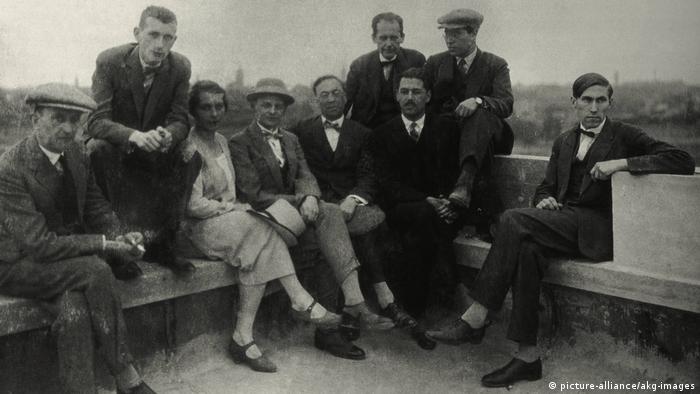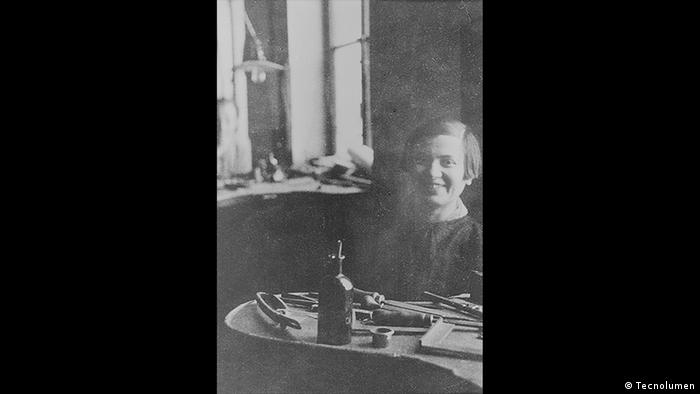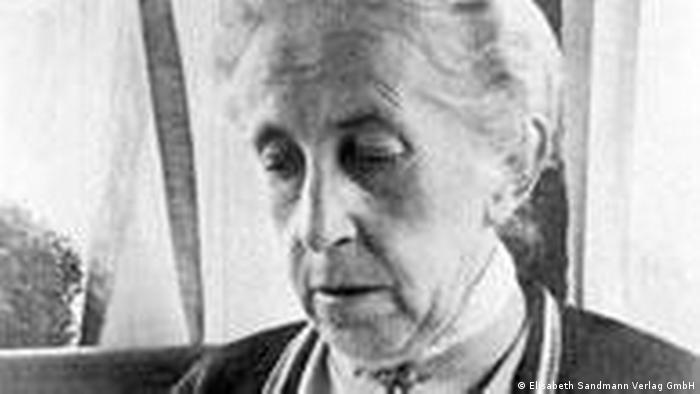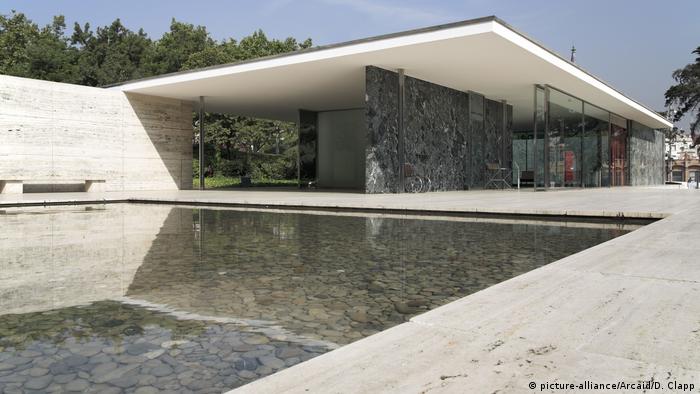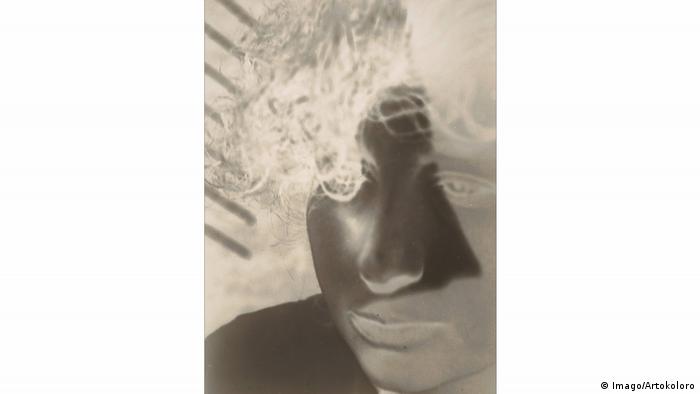More women than men enrolled in 1919 at the Bauhaus in Weimar. Famous the least. An exhibition in Cologne, tells the story of two of Cologne on the inside, their fate is exemplary.
“Where is the wool, is also a woman, the weaves, and it was just to pass the time”, wrote the painter Oskar Schlemmer, the Bauhaus in 1920 as a master. This condescending view on women as inferior artistic essence of the Bauhaus is reflected also in the Johannes Itten’s traditional remark that women could only see “two-dimensional” and therefore better “in the area” should work. Itten was in charge of the so-called preliminary course, a kind of fitness teaching at the Bauhaus, all the students had to go through.
It is only now, 100 years after the founding of the famous school of design by Walter Gropius in Weimar, the Bauhaus members on the inside surface of the story. A number of publications, all written by women, published on the occasion of the anniversary. Ursula Muscheler deals in “mother, Muse and wife of the Bauhaus” with the role of women by Walter Gropius. Jana Revedin and Theresa Enzensberger wrote, “Everyone here calls me Mrs Bauhaus” and “blueprint” novels about the Bauhaus women.
Museums show exhibitions of the Bauhaus-women
The program of the State Bauhaus promised in 1919, modern education for the Gifted, regardless of age and gender. In the summer semester of 1919 eighty-four female and seventy-nine male students enrolled at the Bauhaus in Weimar. Several exhibitions are now showing for the first time the works of women: “4 Bauhaus girls” is the name of one of them in Erfurt, the Tate Gallery in London and the art collection K20 in Düsseldorf, Germany have honored the artist Anni Albers a retrospective.
The Cologne exhibition “2 of 14” at the Museum of Applied arts, illuminated now as an example the career of two of Cologne on the inside. Probably the parents of Margarete Heymann for the then 19-Year-old had to sign a Declaration, as she rubbed in Weimar. During the compulsory Preliminary course with Johannes Itten, the she graduated from the workshop a year and a half in the ceramic. To The Sample.
Fate of Margarete Heymann
The master of the ceramics workshop, Gerhard Marcks, and his work master Max Krehan must have made the ambitious and talented woman in there life difficult – for the sole reason that she was a woman. The ceramics workshop in Dornburg was a pure men’s club, and in order for this to remain so, have been certified Margarete Heymann after your trial period, you will have to be “artistically gifted, but not for the workshop”. Today, we would call such a thing as “bullying”, says the curator of Romana Rebbelmund.

Marianne Heymann-Loebenstein around 1925
Margarete Heymann not completed her training at the Bauhaus and is one of the many women, brought to her studies in Weimar and Dessau. Only 36 women out of the total of 186 graduates had ever made a final, told Rebbelmund. Most of them were in the weaving, it was called at that time, too disrespectful “women’s class”.
Margarete Heymann was your ceramic in series
That Margarete Heymann not only talented artistically, but also the entrepreneurial spirit of the Bauhaus, had understood, shows the journey that she takes after her not-quite-voluntary departure from Weimar. They married in 1923 – in the meantime, you already presented the first ceramics at the art Museum of the Cologne trades – the Economist Gustav stone Loeben. With her husband she founded in Marwitz in Brandenburg, the famous Haël-Werkstätten, where she produces ceramics in series. All of the designs, which were produced semi-industrial, are derived alone from your Hand. The decors of your Service have been applied by the so-called Malmädchen on a conveyor belt. The materials were poured into ready-made forms. With these modern production because you overtook the Bauhaus, the dreamed back then, the designs in larger pads.
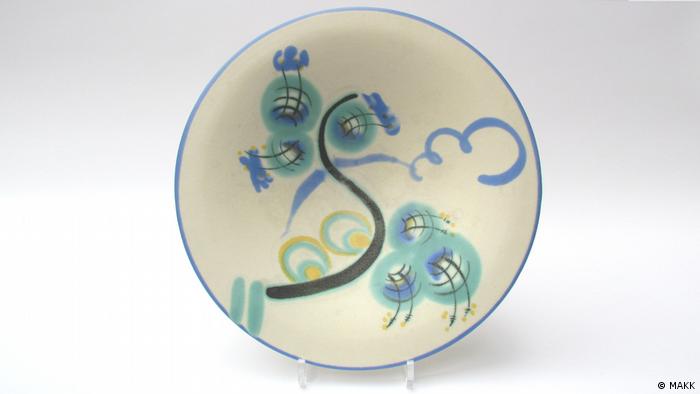
Fruit bowl from the Haël workshops in Marwitz around 1930
Inspiration she repeated in Kandinsky
Margarete Heymann was Wassily Kandinsky’s language of form inspired: circles, lines, blank surfaces, with fine brush is applied, dominate the decor. Each piece is unique. Their motto: a decor for everything. Whether ashtray, tea Cup, who wanted to, could set up in the Heymann-style. With your handle service, which is available through a conical body and the distinctive discs as a Handle in many museums, is finally famous. “Most of the time, it has not been used,” says Romana, “it was just unwieldy”. For the curator, which is also a godsend, because it was in an “exceptionally good condition”.

Tête-à-Tête mocha service from the Haël workshops in Marwitz to 1929
In a second part, the exhibition illuminates the story of Marianne Heymann. The also from Cologne descended cousin of Margaret tried her luck at the Bauhaus and wrote in 1923, in Weimar. After the preliminary course, the inclusion in the Bauhaus workshop for wood sculpture and stage art succeeds in 1924 under the leadership of form master, Oskar Schlemmer.
Career in the theatre
Also by him is recorded that he was of the opinion that creativity is generally thought to be male. Marianne Heymann left the Bauhaus after the Move to Dessau in 1925, because the wood sculpture has been closed. She came back to Cologne, where she was active especially for the performing arts, among other things, at the Cologne Opera. In collaboration with the puppeteer Jupp Duke, who had studied at Cologne University, in the theatre scientist Carl Niessen (1890-1969), carved Marianne dolls Heymann about 100 hand. The three dolls from the Munich city Museum to date, the only well-known and well-preserved specimens from this context.
With the rise of national socialism in Germany, it is the cousins not possible to continue to work. Marianne falls through provocations with a swastika Figurine, as well as a Hitler puppet out of favor. Your cousin Margarete Heymann was forced to 1933, to sell your business in Marwitz. The Jew, emigrated in 1936 to the United Kingdom and founded in London again a company, the “Greta Pottery”. The 100th anniversary brings – albeit late – the Work of these important artists to light.



